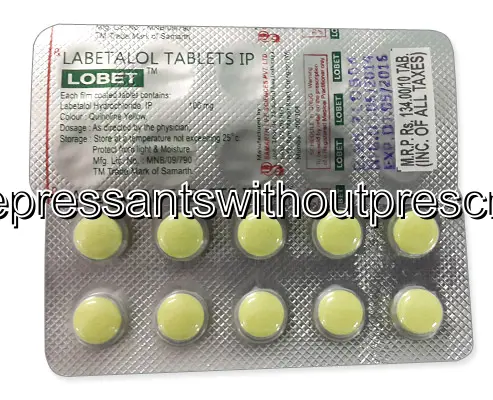| Package | Dosage | Price | Price per Dose | |
|---|---|---|---|---|
| Dosage: 50mg | ||||
| 180 pill | 50mg | £295.86 | £1.65 | |
| 120 pill | 50mg | £200.00 | £1.67 | |
| 90 pill | 50mg | £151.48 | £1.68 | |
| 60 pill | 50mg | £101.77 | £1.69 | |
| 30 pill | 50mg | £52.06 | £1.74 | |
| Dosage: 100mg | ||||
| 180 pill | 100mg | £615.41 | £3.42 | |
| 120 pill | 100mg | £452.09 | £3.76 | |
| 90 pill | 100mg | £372.79 | £4.14 | |
| 60 pill | 100mg | £273.38 | £4.56 | |
| 30 pill | 100mg | £150.29 | £5.01 | |
| Dosage: 200mg | ||||
| 120 pill | 200mg | £821.34 | £6.84 | |
| 90 pill | 200mg | £676.95 | £7.52 | |
| 60 pill | 200mg | £497.06 | £8.28 | |
| 180 pill | 200mg | £377.53 | £2.09 | |
| 30 pill | 200mg | £273.38 | £9.11 | |

Labetalol Description
Introduction to Labetalol
Labetalol is a medication widely used in the treatment of high blood pressure. It belongs to the class of drugs known as beta-blockers, but it is unique because it blocks both beta-adrenergic and alpha-adrenergic receptors. This dual action helps in effectively reducing blood pressure by relaxing blood vessels and slowing down the heart rate. Many patients with hypertension find Labetalol helpful in managing their condition, especially when other medications have not provided adequate control.
How Labetalol Works
The primary mechanism of Labetalol involves its ability to block beta receptors, which normally respond to adrenaline and noradrenaline. By inhibiting these receptors, Labetalol decreases the heart's workload and lowers the force of contractions. Additionally, its alpha-blocking activity causes blood vessels to dilate, further aiding in blood pressure reduction. This combined effect makes Labetalol particularly effective in cases where blood pressure needs to be controlled quickly or carefully maintained in certain populations, such as pregnant women with hypertension.
Uses and Benefits
Aside from managing hypertension, Labetalol is also employed in the treatment of other cardiovascular conditions. It can help in reducing the risk of strokes, heart attacks, and other complications related to high blood pressure. Labetalol is sometimes used during hypertensive crises, providing rapid blood pressure control. Its ability to lower blood pressure without causing significant reflex tachycardia makes it a preferred choice for many healthcare providers. Patients often appreciate its efficacy and the manageability of side effects when used correctly under medical supervision.
Formulation and Dosage
This medication is typically available in oral tablets, with doses tailored to each patient's needs. Doctors usually start with a low dose to assess tolerance, gradually increasing the dosage until optimal blood pressure control is achieved. In some cases, Labetalol is administered intravenously, especially in emergency situations. It is essential for patients to follow the prescribed dosing schedule, as abrupt stopping can lead to a rebound effect, increasing blood pressure rapidly.
Possible Side Effects
While many patients tolerate Labetalol well, some may experience side effects. Common issues include fatigue, dizziness, nausea, or cold extremities. In rare cases, more severe reactions such as shortness of breath, wheezing, or swelling may occur. Because Labetalol affects heart rate and blood pressure, it is crucial for patients to be monitored regularly by healthcare professionals. Anyone experiencing unusual symptoms should seek medical advice promptly.
Cautions and Considerations
Labetalol should be used cautiously in patients with certain medical conditions like asthma, respiratory problems, or heart failure. Pregnant women may use Labetalol under strict medical supervision, as it is considered safe during pregnancy and can help manage hypertension that poses risks to both mother and baby. Patients should inform their healthcare provider about any other medications they are taking to avoid potential interactions. Regular blood pressure monitoring is essential to ensure the medication's effectiveness and safety.
Conclusion
Labetalol remains an effective and versatile medication for controlling high blood pressure and related cardiovascular issues. Its ability to act on both beta and alpha receptors offers advantages over traditional single-action beta-blockers. When used as directed and under medical supervision, it can significantly improve patient outcomes and quality of life. Patients should always adhere to prescribed dosages and report any adverse effects to their healthcare providers to ensure safe and effective treatment.
